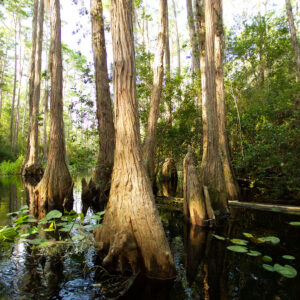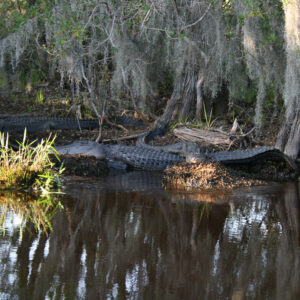
The Okefenokee Swamp is a shallow swamp that covers an area of roughly 700 square miles in Southeast Georgia and Northeast Florida, making it the largest swamp in North America. The habitats within the Okefenokee Swamp are diverse and include sandy ridges, grassy savannahs, cypress swamps, meandering waterways, small islands, and extensive prairies among many others. There are approximately seventy floating mats of peat, or tree islands, which provide a unique habitat for many shrubs and trees.

These habitats allow for the existence of extremely high levels of biodiversity within the swamp. This includes dense flora like the giant tupelo, the bald cypress, and Spanish moss as well as abundant fauna including about 175 species of birds, over 60 reptile species, and at least 40 mammal species. The largest mammals in the swamp are black bears, bobcats, and white-tailed deer and the largest reptiles are the American alligator and the Indigo snake. However, at the beginning of the 20th century, extensive logging operations in the region began removing much of this pristine habitat causing Franklin D. Roosevelt to create the federally protected Okefenokee National Wildlife Refuge in 1937 which protects about 80% of the swamp.
During the Cretaceous period, more than sixty-five million years ago, the Okefenokee swamp was under the ocean. The marine sediments left from this time means that there is a layer of sandy soil without many nutrients. More recently, wave activity created by offshore sand bars near the swamp presumably created the 25×40 mile depression that is now the swamp. This depression filled in with fresh water and floating islands giving it its name, Okefenokee, the Seminole word for “trembling earth”.
Sources:
Britannica, The Editors of Encyclopaedia. “swamp”. Encyclopedia Britannica, 9 Sep. 2021, https://www.britannica.com/science/swamp
Gibbons, Whit. “Natural History of the Okefenokee Swamp.” New Georgia Encyclopedia, 06 September 2002, https://www.georgiaencyclopedia.org/articles/geography-environment/natural-history-of-the-okefenokee-swamp/